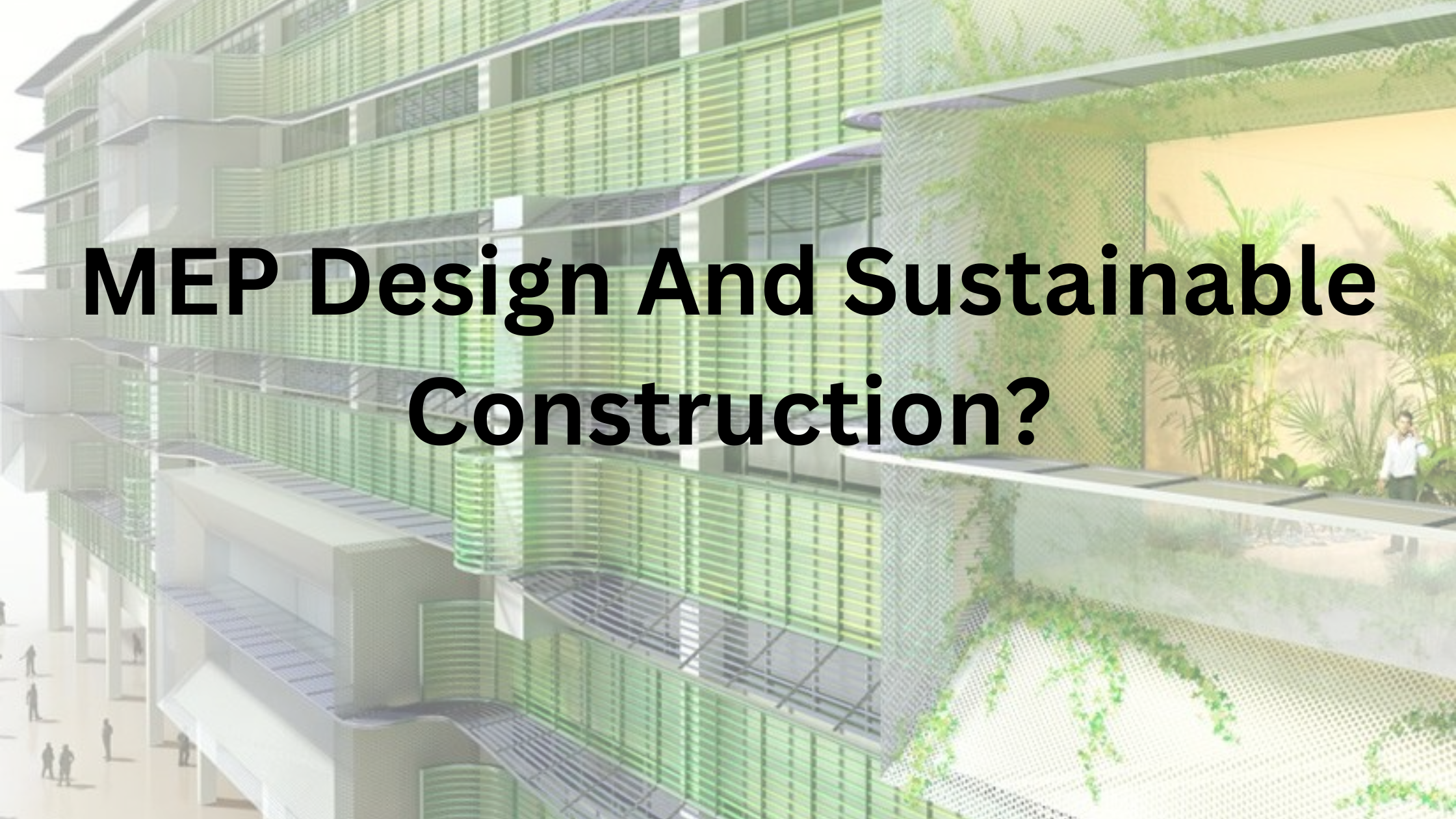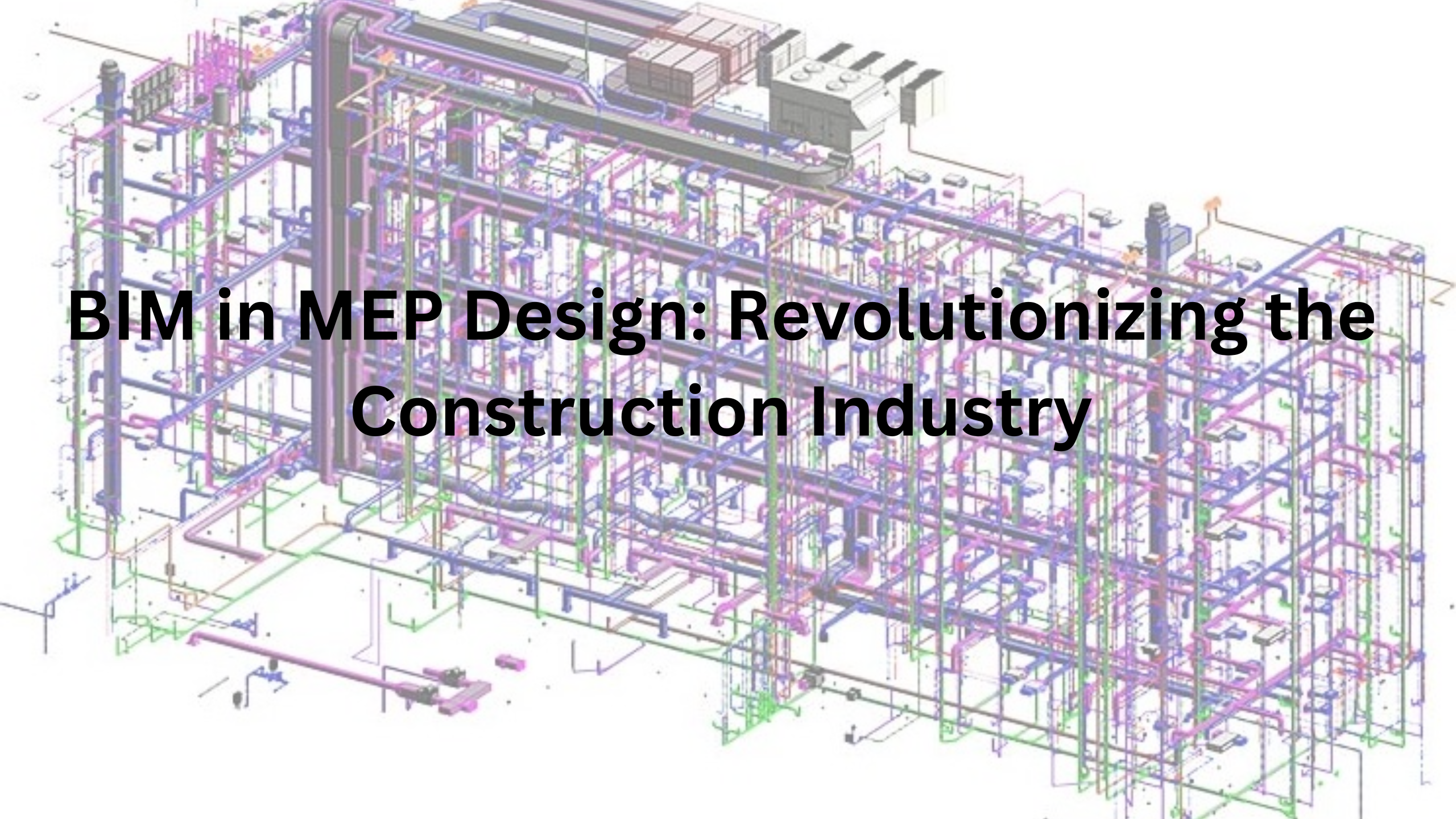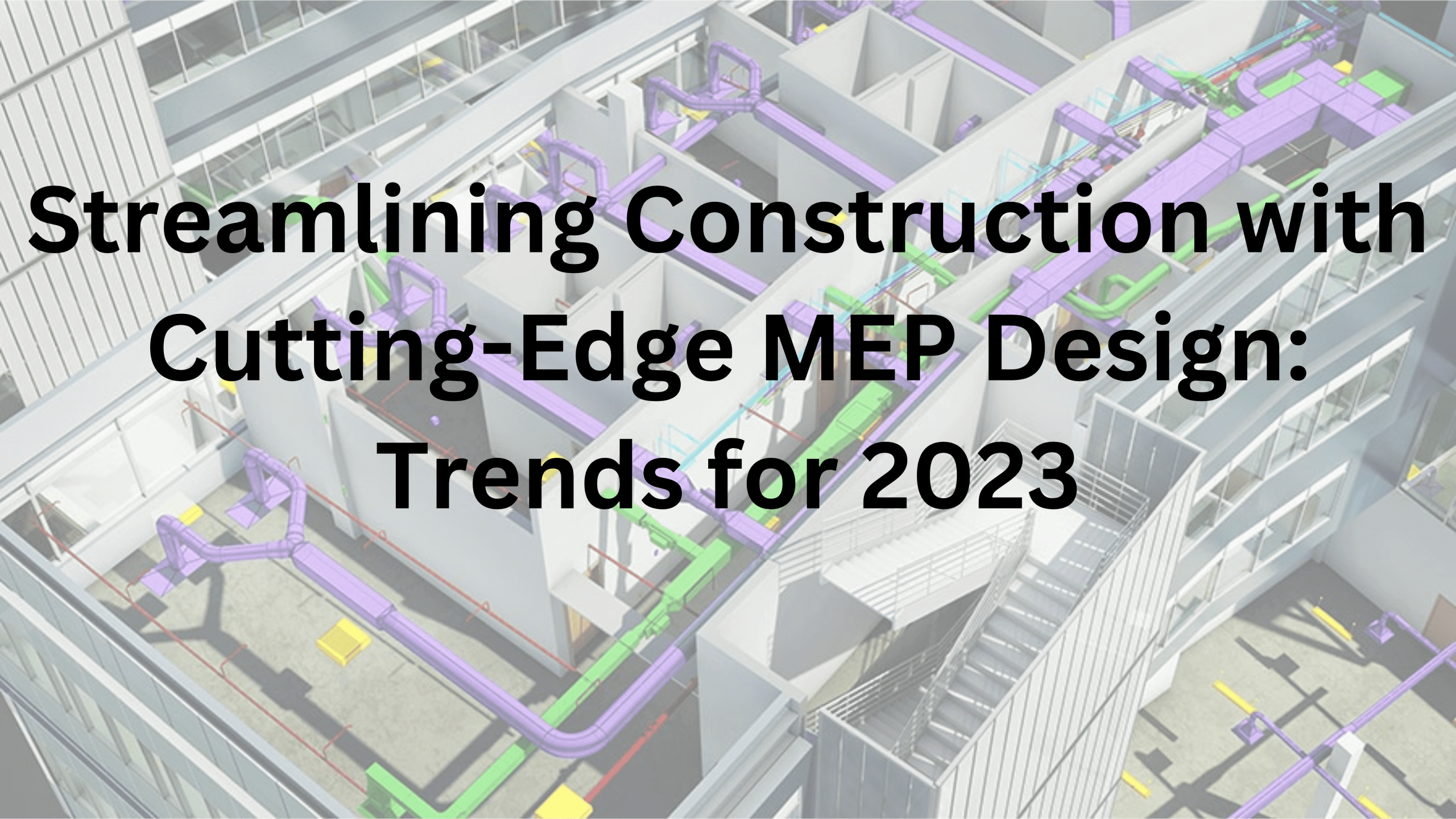In today’s world, sustainable construction practices have become paramount as we grapple with the consequences of climate change and diminishing natural resources. As a result, architects, engineers, and builders are increasingly focusing on creating structures that meet the present needs and consider the environmental impact and resource efficiency. Mechanical, Electrical, and Plumbing (MEP) design is a key aspect of sustainable construction. In this blog, we will explore why MEP design is crucial for sustainable construction, drawing insights from leading experts and studies in the field.
What Is Sustainable Construction?
Sustainable construction, also known as green building or eco-friendly construction, aims to create energy-efficient, environmentally responsible, and resource-conscious buildings. This construction approach seeks to minimize the negative impacts on the environment and occupants’ health while maximizing the efficient use of resources.
The Role of MEP Design in Sustainable Construction
Mechanical, Electrical, and Plumbing (MEP) systems are the backbone of any building, playing a pivotal role in its functionality and sustainability. MEP design encompasses various essential components, including heating, ventilation, air conditioning, lighting, electrical distribution, plumbing, and fire protection systems. We will delve into several vital aspects to understand why MEP design is crucial for sustainable construction.
1. Energy Efficiency
One of the primary goals of sustainable construction is to reduce energy consumption. MEP systems have a significant impact on a building’s energy efficiency. Architects and engineers can optimize energy use through careful design and system selection. According to a report by the American Society of Heating, Refrigerating, and Air-Conditioning Engineers (ASHRAE), HVAC (Heating, Ventilation, and Air Conditioning) systems account for approximately 39% of the total energy used in commercial buildings. Properly designed MEP systems can significantly lower this figure by using energy-efficient equipment and systems.
2. Indoor Air Quality
Sustainable construction emphasizes creating environments that promote the health and well-being of building occupants. Properly designed HVAC systems are essential for maintaining high indoor air quality. Improved ventilation and filtration systems help reduce the concentration of pollutants and allergens in the air, leading to a healthier and more comfortable living or working environment.
3. Water Efficiency
MEP design also plays a crucial role in conserving water resources. By incorporating low-flow fixtures and efficient plumbing systems, designers can significantly reduce water consumption in a building. Water-efficient plumbing fixtures can reduce potable water consumption, contributing to sustainable water management practices.
4. Lighting and Electrical Systems
Efficient lighting and electrical systems are vital for energy savings and occupant comfort. LED lighting, for example, is a highly energy-efficient option that can substantially reduce electricity consumption. Furthermore, integrated into the MEP design, building automation, and control systems can optimize lighting and electrical usage by adjusting it according to occupancy and natural lighting conditions.
Expert Insights
To support the importance of MEP design in sustainable construction, we can refer to the insights of industry experts and findings from influential studies.
- ASHRAE Research: ASHRAE, a global leader in advancing indoor environment technology, has published extensive research on the role of MEP systems in sustainable construction. ASHRAE’s research underscores the impact of mechanical, electrical, and plumbing design in achieving energy efficiency and indoor air quality goals.
- U.S. Green Building Council (USGBC): The USGBC administers the LEED (Leadership in Energy and Environmental Design) certification and recognizes the critical role of MEP systems in green building practices. Their comprehensive guidelines and rating system emphasize the integration of efficient HVAC, lighting, and water systems.
- Industry Case Studies: Numerous case studies highlight the real-world impact of MEP design on sustainable construction. For instance, the Bullitt Center in Seattle, known as “the greenest commercial building in the world,” showcases the importance of MEP design in achieving net-zero energy and water use.
The Integration of Sustainable MEP Design
Sustainable MEP design optimizes individual systems and their integration to work harmoniously. Integrated design involves a collaborative effort among architects, engineers, and builders to ensure that all MEP systems work seamlessly to achieve sustainability goals. A report from the National Institute of Building Sciences (NIBS) highlights the importance of integrated design in sustainable construction, stressing that early collaboration among all stakeholders results in more efficient and cost-effective solutions.
Challenges and Considerations
While the benefits of design in sustainable construction are evident, several challenges and considerations must be addressed. These include:
- Budget Constraints: Sustainable MEP systems may require a higher investment initially, but the long-term energy savings and environmental benefits outweigh the upfront costs.
- Skilled Workforce: A skilled workforce is essential to implement sustainable MEP design. Training and education programs can bridge this skills gap.
- Technological Advancements in MEP Design: Staying updated with the latest technologies and trends in MEP design ensures maximum sustainability.
Conclusion
In conclusion, the role of MEP design in sustainable construction cannot be overstated. As our world faces environmental challenges, constructing resource-efficient, energy-conscious, and occupant-friendly buildings is paramount. Integrating efficient Mechanical, Electrical, and Plumbing systems reduces a building’s carbon footprint and results in healthier, more comfortable living and working spaces.
As we’ve seen through the insights of industry experts and relevant studies, sustainable MEP design is pivotal in achieving the goals of sustainable construction. It minimizes energy consumption, optimizes indoor air quality, conserves water, and enhances overall building performance. While challenges can be overcome, the long-term benefits outweigh the initial costs.
In the pursuit of sustainable construction, architects, engineers, and builders must prioritize MEP design and continue to push the boundaries of what is possible in creating buildings that not only meet our current needs but also safeguard the future of our planet. The collaboration of experts in these fields and the integration of sustainable design practices are crucial steps toward a greener and more sustainable built environment.




